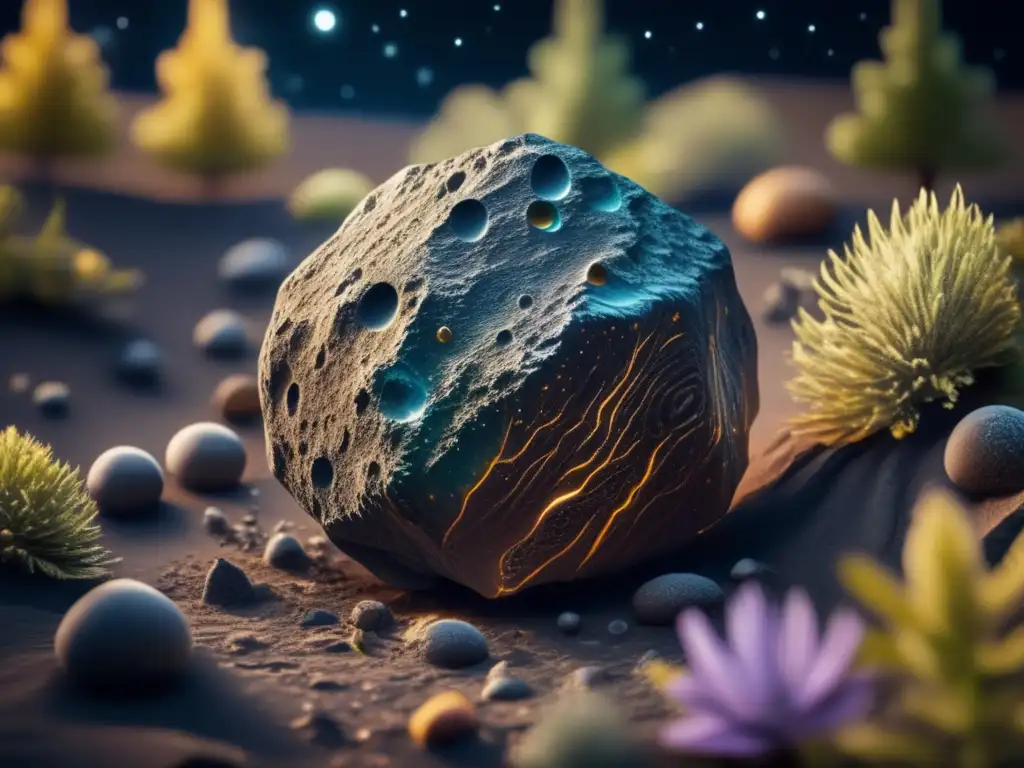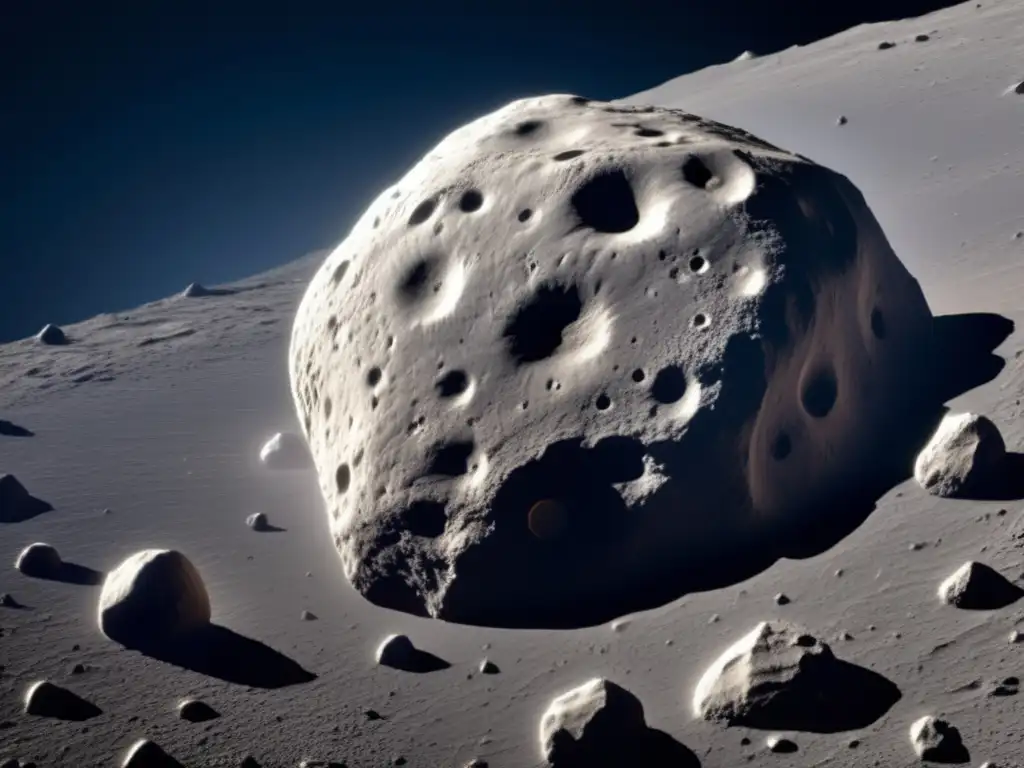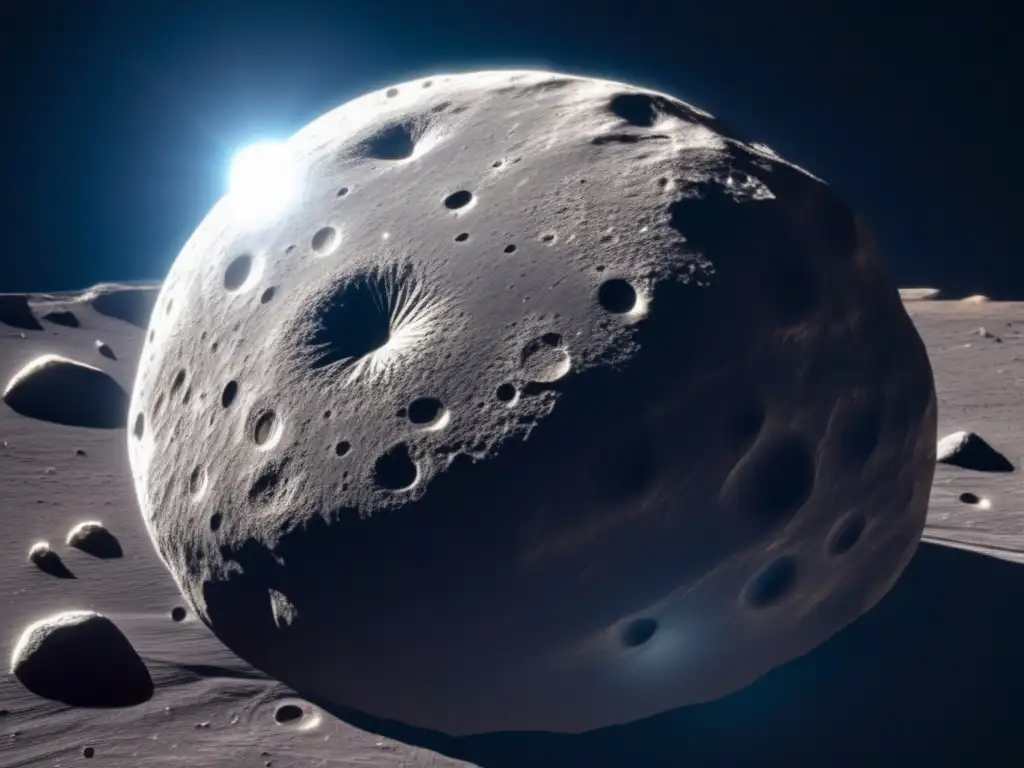All About Flora: A Main-Belt Asteroid

Introduction
Welcome to Asteroid Realm's comprehensive guide to Flora, a main-belt asteroid with a fascinating history and cultural significance. In this article, we will explore everything you need to know about Flora, from its discovery to its composition and its place in the asteroid belt.
Discovery of Flora

Flora's Naming and Discovery Date
Flora was named after the Roman goddess of flowers and vegetation and was discovered on October 18, 1847, by astronomer John Russell Hind at the Royal Observatory in London. It was the seventh asteroid to be discovered overall.
Observations and Early Research
After its discovery, Flora quickly gained attention due to its relatively large size and proximity to Earth. Astronomers began studying its orbit and physical characteristics, providing valuable insights into the nature of asteroids.
Flora's Orbital Characteristics
Flora orbits the Sun in the inner region of the main asteroid belt between the orbits of Mars and Jupiter. Its average distance from the Sun is approximately 2.2 astronomical units (AU), with an orbital period of around 3.3 years.
Physical Characteristics of Flora

Size and Shape
Flora has an estimated diameter of about 136 kilometers (84 miles) and is classified as a stony S-type asteroid. It has an irregular shape, resembling a slightly flattened ellipsoid, with craters and grooves visible on its surface.
Composition and Spectral Analysis
Based on spectral analysis, Flora is primarily composed of silicate minerals, such as pyroxene and olivine. Its surface reflects sunlight in a way that indicates the presence of these minerals. This composition is typical of S-type asteroids.
Rotation and Spin Period
Flora has a relatively fast rotation period, completing a full spin on its axis in approximately 3.5 hours. This rapid rotation has led to a slightly elongated shape due to centrifugal forces.
Flora's Significance and Cultural Connections

Asteroid Belt Dynamics and Formation
Studying asteroids like Flora provides valuable insights into the overall dynamics and formation of the asteroid belt. Flora's location and composition contribute to our understanding of the processes that shaped the early solar system.
Impact and Collision History
Flora has likely experienced numerous collisions throughout its existence. These impact events have shaped its surface features and may have contributed to the creation of smaller asteroids through fragmentation.
Scientific Missions and Exploration
While Flora has not been the target of any dedicated space missions, knowledge gained from studying it has informed the design and objectives of future missions, such as NASA's Lucy mission, which aims to explore multiple Trojan asteroids.
Frequently Asked Questions

-
What is the origin of Flora's name?
Flora is named after the Roman goddess of flowers and vegetation.
-
How was Flora discovered?
Flora was discovered by astronomer John Russell Hind at the Royal Observatory in London on October 18, 1847.
-
What is Flora's orbital period?
Flora completes one orbit around the Sun in approximately 3.3 years.
-
What is Flora made of?
Flora is primarily composed of silicate minerals such as pyroxene and olivine.
-
Has Flora been visited by any space missions?
No, Flora has not been the target of any dedicated space missions.
Conclusion
Flora, a main-belt asteroid named after the Roman goddess of flowers, holds significant value in our understanding of the solar system's formation and dynamics. Its composition, orbital characteristics, and cultural connections make it an intriguing subject of study. We hope this comprehensive guide has provided you with valuable insights into Flora's history, physical characteristics, and cultural significance.
Feel free to share your thoughts and further engage with the asteroid community through the comments section below. Don't forget to subscribe and follow www.asteroidrealm.com for more exciting asteroid-related content. Thank you for joining us on this exploration of asteroids!
Additional Resources

If you'd like to delve deeper into the topic of asteroids and their significance, here are some additional resources:
- NASA's Asteroid Website
- NASA's Overview of Asteroids, Comets, and Meteors
- International Astronomical Union (IAU) - Physical Properties of Asteroids
- Asteroid Realm Website
 The Asteroid Nysa: A Super-Fast Rotator
The Asteroid Nysa: A Super-Fast Rotator A Journey To The Asteroid Hygiea
A Journey To The Asteroid Hygiea The Strange Shape Of The Asteroid Kleopatra
The Strange Shape Of The Asteroid KleopatraIf you want to discover more articles similar to All About Flora: A Main-Belt Asteroid, you can visit the Asteroid Profiles category.
Leave a Reply

Articulos relacionados: